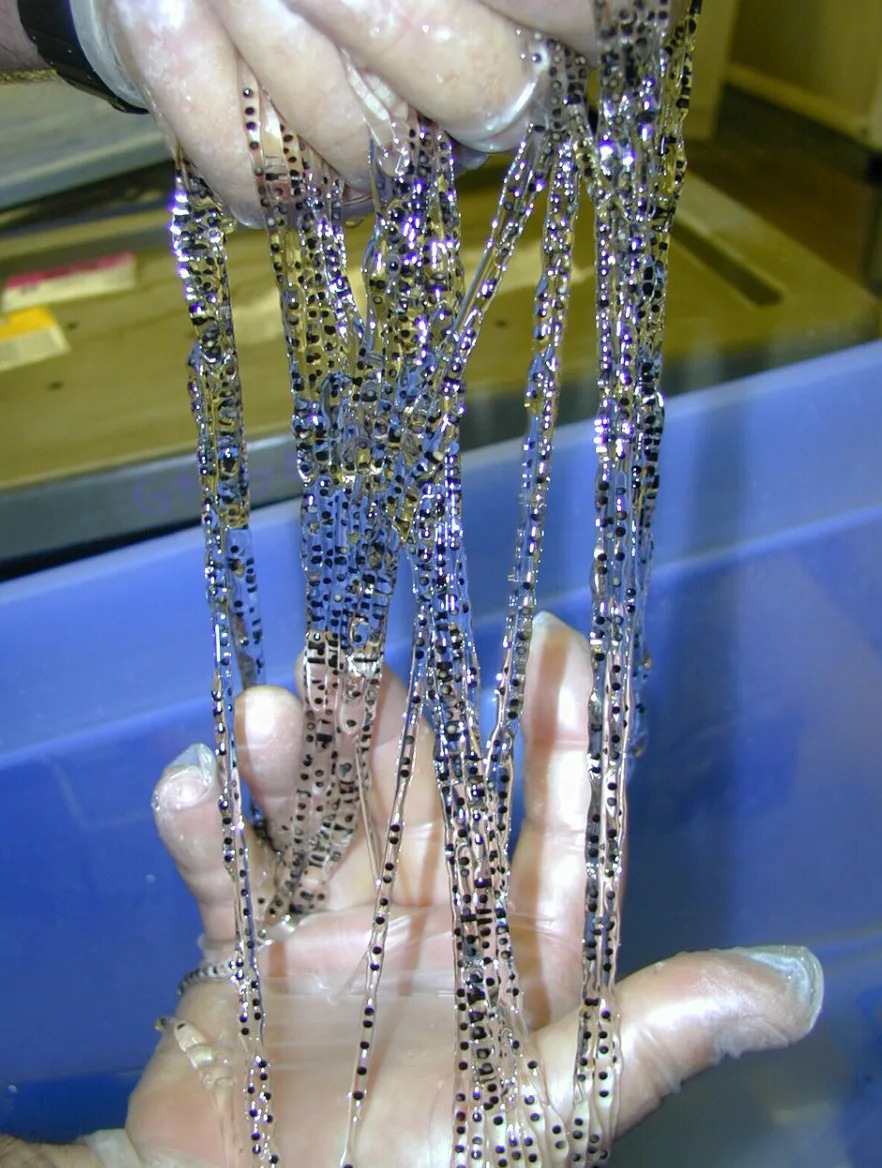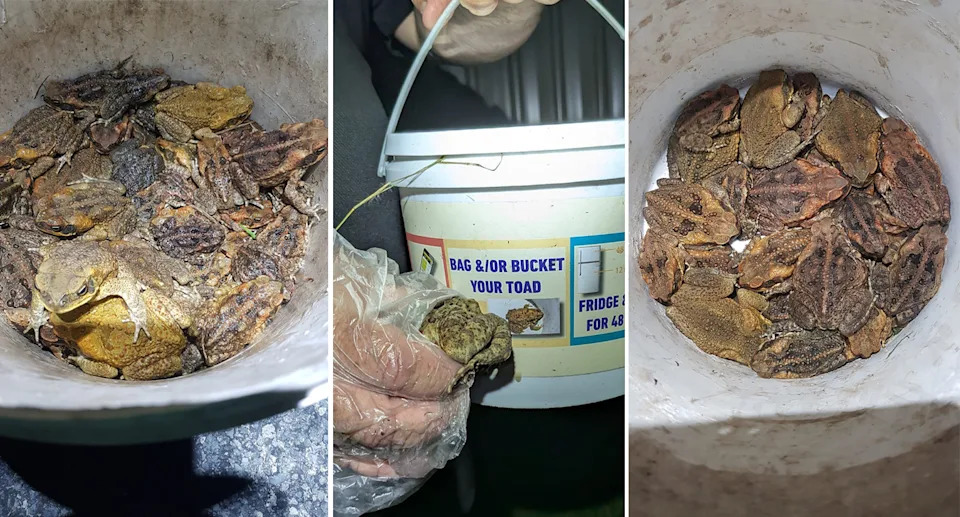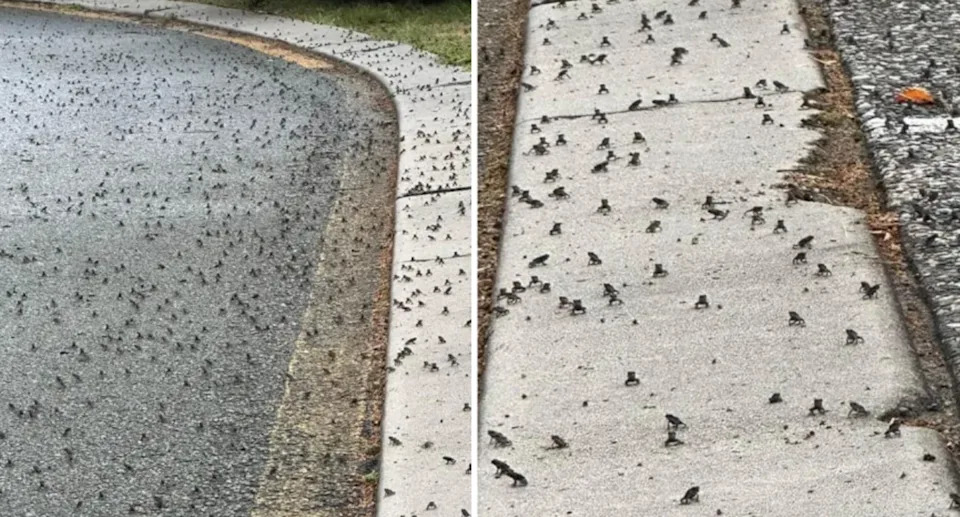Australians are being warned of the dangers of handling cane toad eggs, after an east coast resident found what appeared to be metres of “disgusting”, stringy spawn in their pool.
The Queensland resident, from Surfers Paradise on the Gold Coast, took to social media to ask their community the best way to dispose of the toxic, jelly-like substance. “How do you avoid these toad pests?” they questioned.
Locals weighed in and suggested numerous methods, from drying out the sprawn to simply binning it. Many said cane toads had also targeted their homes in recent weeks. “That is disgusting — aren’t they just the worst?” a woman commented. “My husband forgot to put the cover on last night, and I came home to find one swimming around. I was grossed out.”
“Those things could survive a nuclear war, I reckon,” said a second.
Dr Clare Morrison, conservation biologist with Griffith University, knows first-hand about the havoc the cane toad can wreak. She warned the public that any control methods must be used with extreme care.

Cane toads lay eggs in long, jelly-like strings. Source: CSIRO
Why are cane toads such a pest in Australia?
Cane toads are one of Australia’s worst invasive species, having exploded in numbers across the country since their arrival.
Originally introduced to Queensland in 1935 to control beetles in sugarcane crops, cane toads have since spread relentlessly across northern Australia, with populations now numbering in the hundreds of millions. Their toxic glands — cane toads carry both venom and poison — make them deadly to most native predators, devastating ecosystems and wiping out species that try to eat them.
Despite decades of control efforts, their advance shows little sign of slowing, and scientists estimate they continue to spread westward at up to 60 kilometres a year, adapting to new environments and leaving a trail of ecological damage in their wake.

There are estimated to be some 200 million cane toads in Australia. Source: Facebook/Maclean Noticeboard
How to identify cane toad spawn and remove it
Morrison said cane toads have distinct string-like spawn, as opposed to native toads, which lay eggs in clusters. “Cane toads are the only ones in Australia that lay their eggs in these really long black strings, and it can be thousands of eggs, anywhere from 5,000 to 30,000 eggs,” she said.
“Native frogs tend to lay their eggs in clusters, and it often looks foamy. So they’re very different.”
She urged the public to wear gloves should they attempt to remove it. “You’ve got to remember that the eggs are toxic,” she said. “You don’t want to be handling them with your bare skin. Make sure you’ve got gloves on and make sure you wash your hands properly afterwards.”
Morrison said a pool rake is one effective way to “break them up”. “They should all stick together and like in a big clump,” she said.

Cane toads recently swamped another Gold Coast complex. Source: Supplied
Once removed, there are several safe ways to destroy the eggs. One option is to leave them in the sun to dry, which kills the embryos, although Morrison warned this can attract pets or birds. Another is to dig a deep hole and bury them.
“And the last one is that you can just simply put them into like a zip-lock bag, or any bag that you can seal up tightly — and double bag it if you want — and then just put them in the bin,” she said. “Again, make sure you wash your hands along the way if you’re actually handling them.”
Morrison said it’s important to remove cane toad eggs from ponds or pools as soon as you spot them, warning that waiting could prove disastrous.
“Once they become tadpoles, they’re not in one place, they’re going to shift around through the water, and they’re going to be a lot harder to capture,” she said, adding that eggs can hatch in as little as two days.
Love Australia’s weird and wonderful environment? 🐊🦘😳 Get our new newsletter showcasing the week’s best stories.


